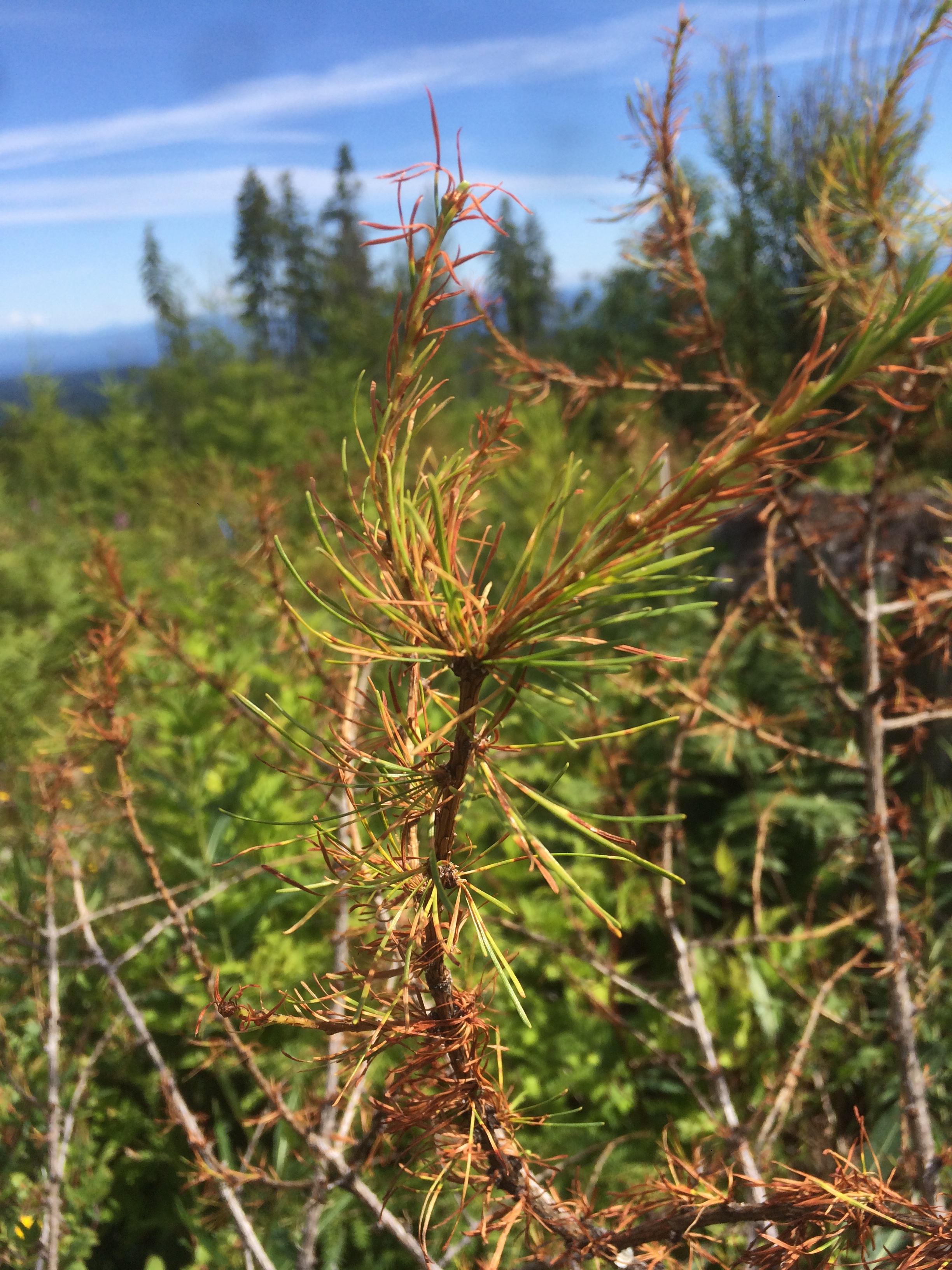Larch needle blight
Larch needle blight is caused by the fungus Hypodermella laricis and it infects all larch species, with western larch (Larix occidentalis) being the major host of concern in British Columbia. It can kill both needles and spur shoots. Larch needle blight and Larch needle cast can occur on the same host at the same time.
Description
The fungus overwinters in dead needles on the ground. The fungus produces spores in early spring during larch bud break. Spores are spread by both wind and rain splash and these spores infect the newly emerging larch needles. Mature needles of larch are immune to the disease.
Damage caused by the fungus first appears in June. Needles are discoloured over their entire length and all needles on a spur are usually affected. Small black fruiting bodies are formed on dead needles and infected needles will usually remain on the tree for a year before they fall off.
Management
No stand level control measures are practical.

Visible larch needle blight (brown needles and dead tufts of needles) and larch needle cast (brown spots on the needles).
Contact information
Contact us if you have questions about Lophodermella in British Columbia.
